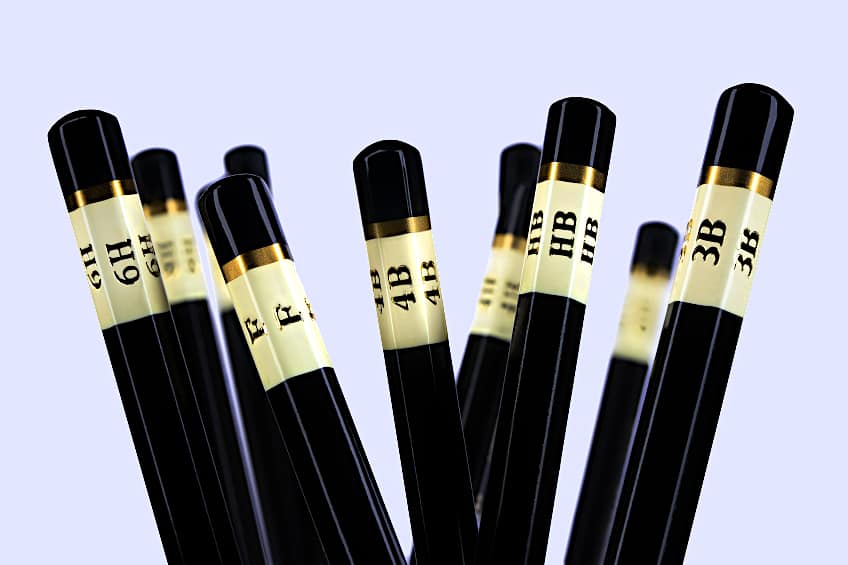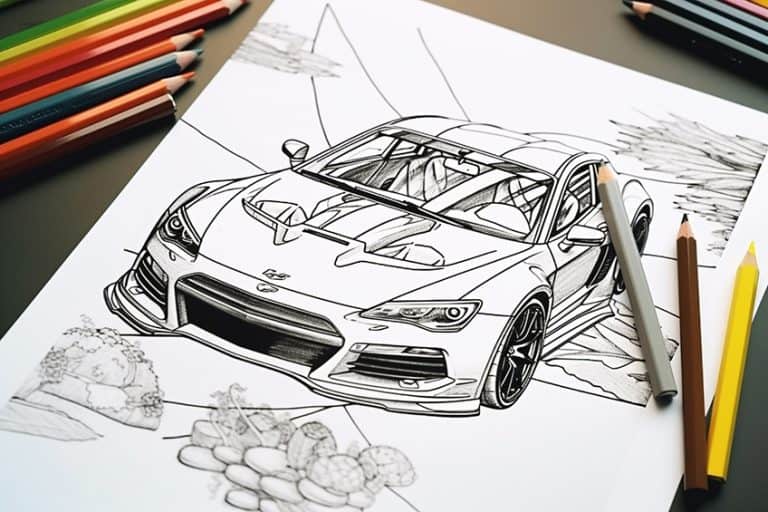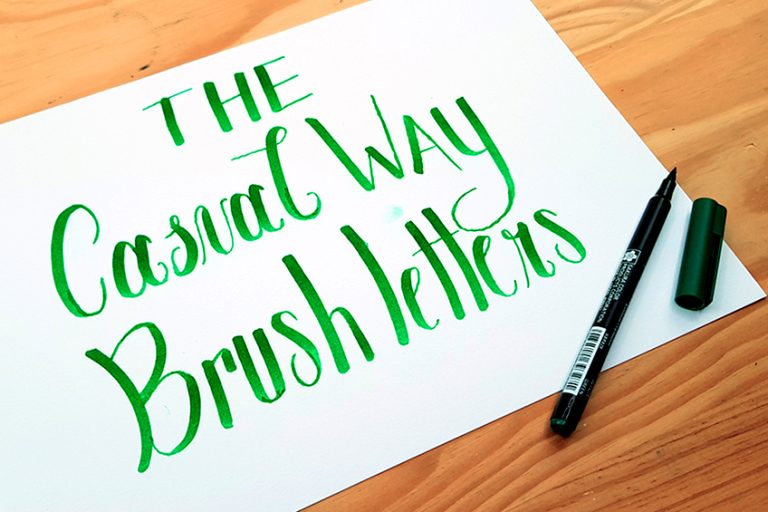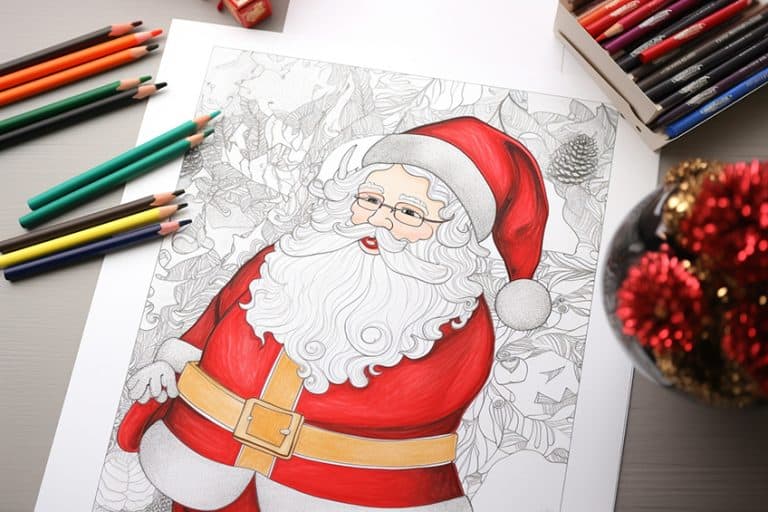Hardness of Pencils – Guide to the Graphite Grading Scale
Drawing is one of the most accessible forms of art; all you need is a pencil and paper. However, if you wish to progress, you need to understand what pencil lead hardness is. Each of the pencil lead types offer a way to help you produce different drawing techniques. In this article, you can read further to find out more about the hardness of pencils.
Definition of Pencil Hardness
What pencil is best for sketching? You might be asking yourself this question if you have ever been to a stationary store, and you are standing in front of a wall of different pencil choices. A basic definition would be that the lead or core of a pencil is made from graphite that has been ground and a clay filler.
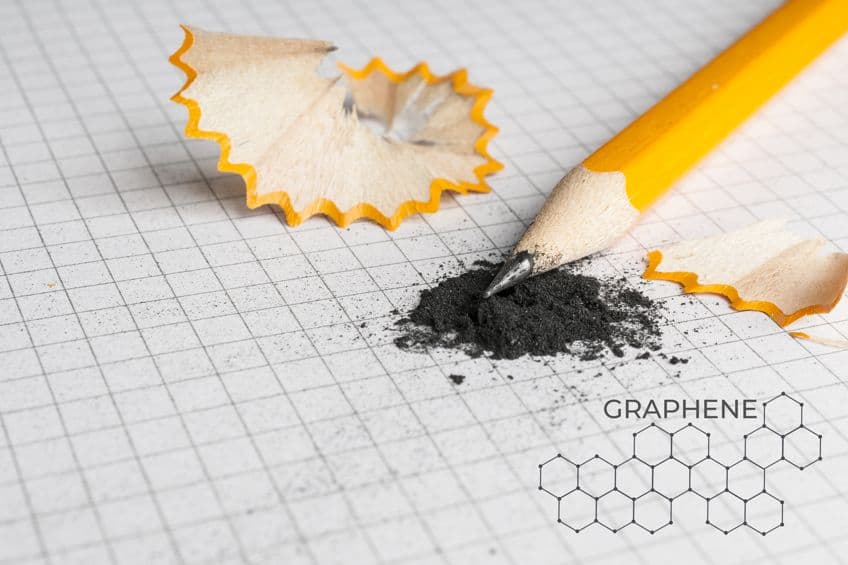
This pencil lead can be categorized in what is known as a lead hardness scale. This means pencils come in different degrees of softness or hardness.
These different pencil lead types help artists to choose the proper pencil for their artistic needs, which means the pencil provides a certain mark or line they are looking for.
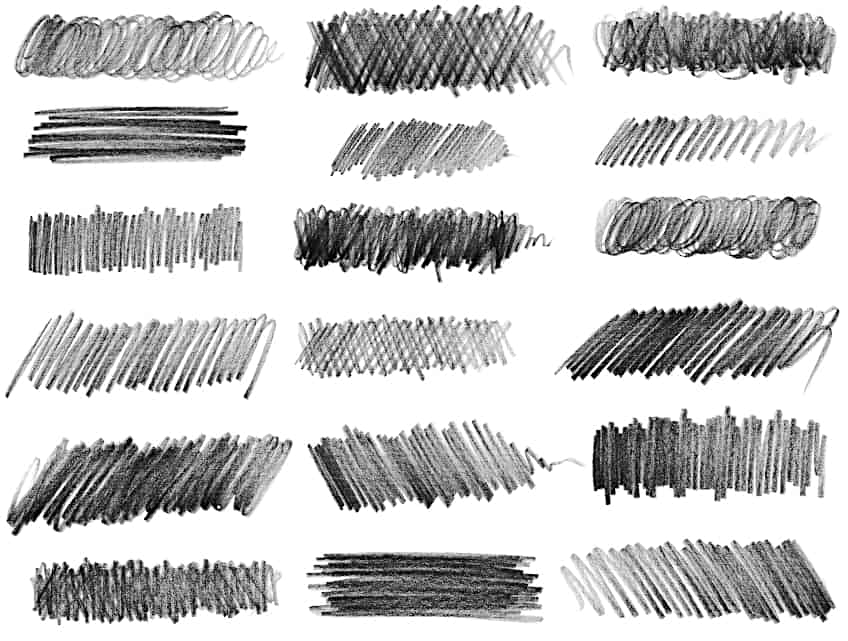
Importance of Pencil Hardness in Writing and Drawing
The hardness of pencils determines how the lines or marks are going to appear on the paper surface. When used, softer pencils will produce broad lines that are thicker and are best used by artists for drawing purposes.
When writing, you do not want a pencil that is too dark or too light. A medium pencil, or what we know as an HB pencil is ideal for writing purposes.
These types of pencils can easily be erased if you make a mistake. For drawing purposes, you could use a range of pencil lead types to achieve the look you are going for.
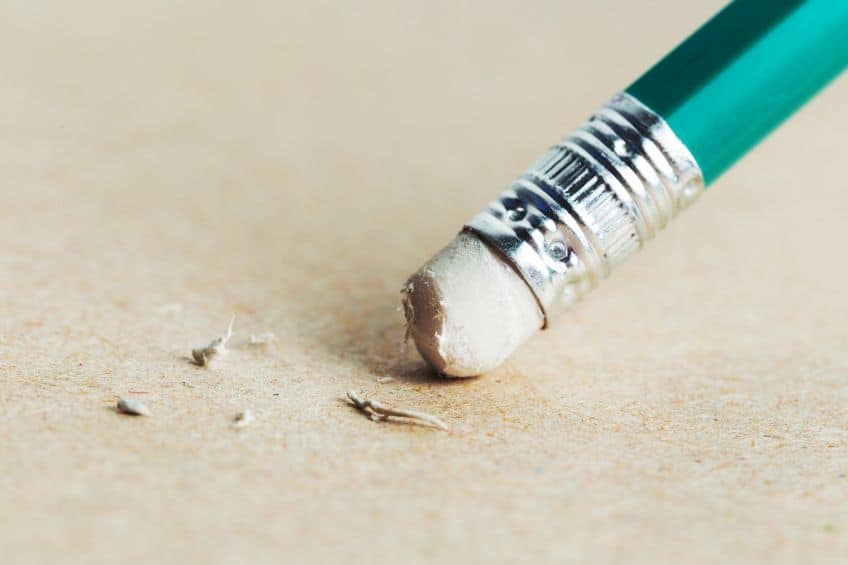
Brief History of Pencil Making
When we know a pencil is made from graphite, why is it called a pencil lead? Ancient Egyptians discovered how to pour molten lead into hollowed-out reeds or bamboo and used the final product to write with, and in the Middle Ages, lumps of lead were used for drawing.
However, even though they did not know at the time, lead is hazardous to health, and is too solid to perform the task of writing well.
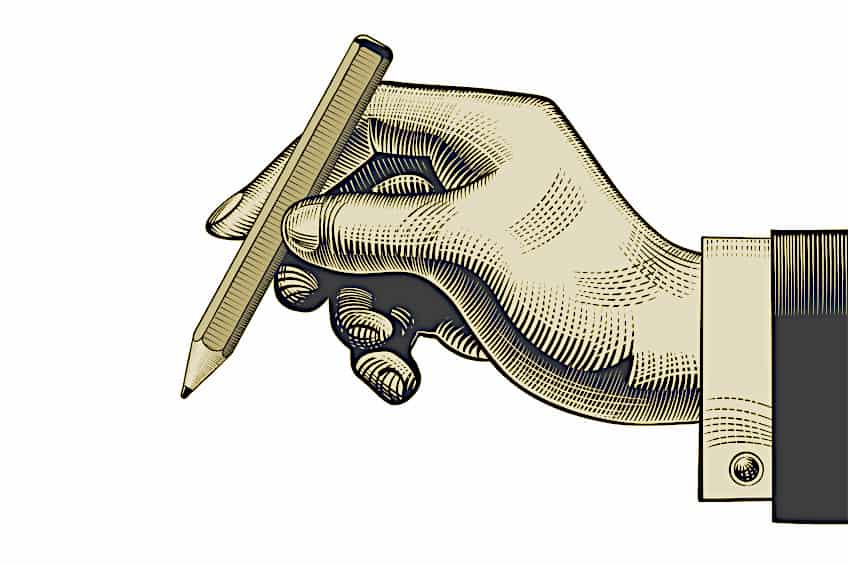
Many years later, graphite was discovered and found to be much softer than lead. However, in those times, using graphite darkened the hands and was a bit messier to use today. The graphite was then wrapped in string.
During the 18th century, a scientist by the name of Nicholas-Jacques Conte, who served in Napoleon Bonaparte’s army, invented the modern-day wooden encased lead pencil. Today, we have also developed a range of pencil lead types.
Understanding Pencil Hardness
To understand the hardness of pencils, there is a pencil lead hardness scale. The most common lead hardness scale is the European system, which uses letters and numbers to identify each pencil grade. We will be dealing further with this later in the article, as this is more of a comprehensive system.
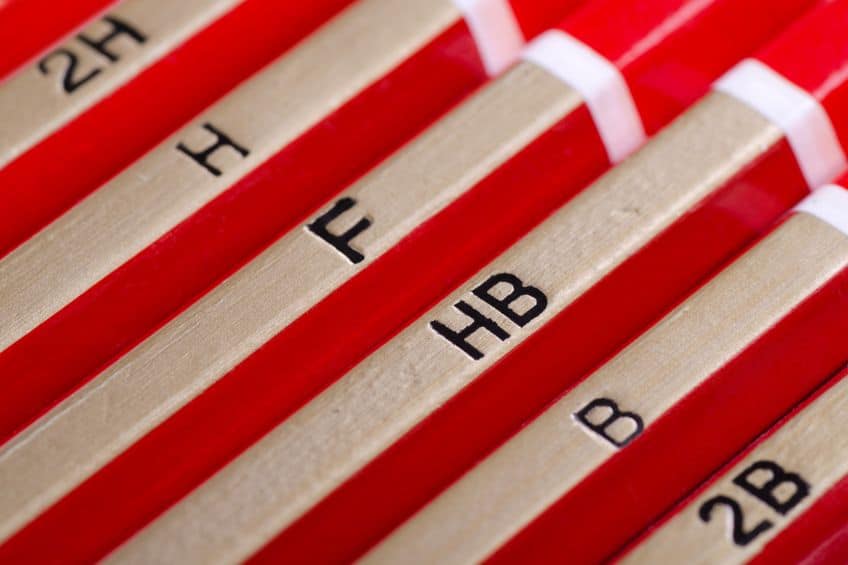
There is also an American system, where you will find the most common pencil everyone should be familiar with, the #2 pencil. This is equivalent to the HB pencil by European standards. So, when you purchase a pencil, you might notice that there is a “no.2” or “HB” marking next to each other. The number 4 would be the hardest pencil.
However, there is no set international standard for grading the hardness of pencils. When using Japanese pencils, they might appear to be darker than those equivalent to European pencils, even though the same system is used in both cases. So, the grade of pencil lead hardness can differ from brand to brand.
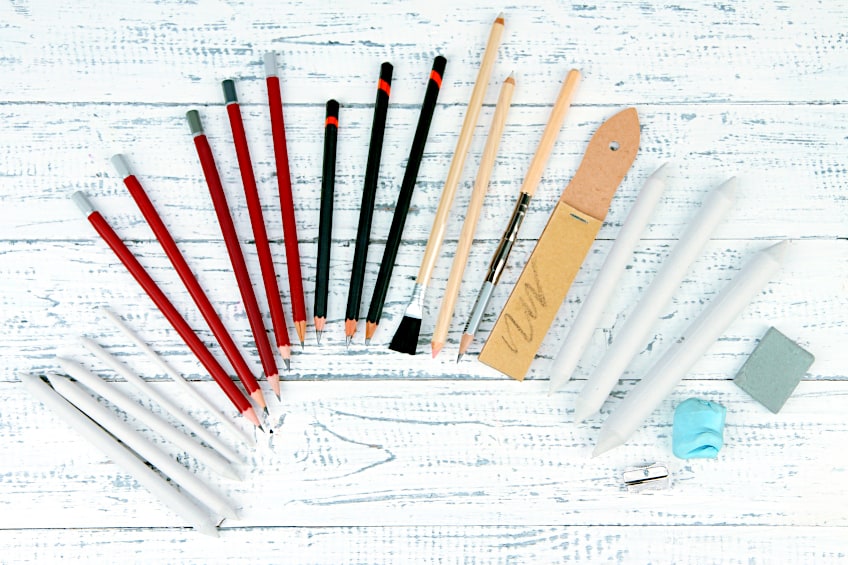
Pencil Lead Hardness Scale Explained
As we mentioned, we are going to stick to the more comprehensive European system of grading pencils. The drawing pencil scale consists of 20 different degrees of hardness, each one containing a number and letter.
The scale ranges from 9H to 9B, which is from the hardest to softest or blackness of a pencil. The designated letters come from hardness and blackness.
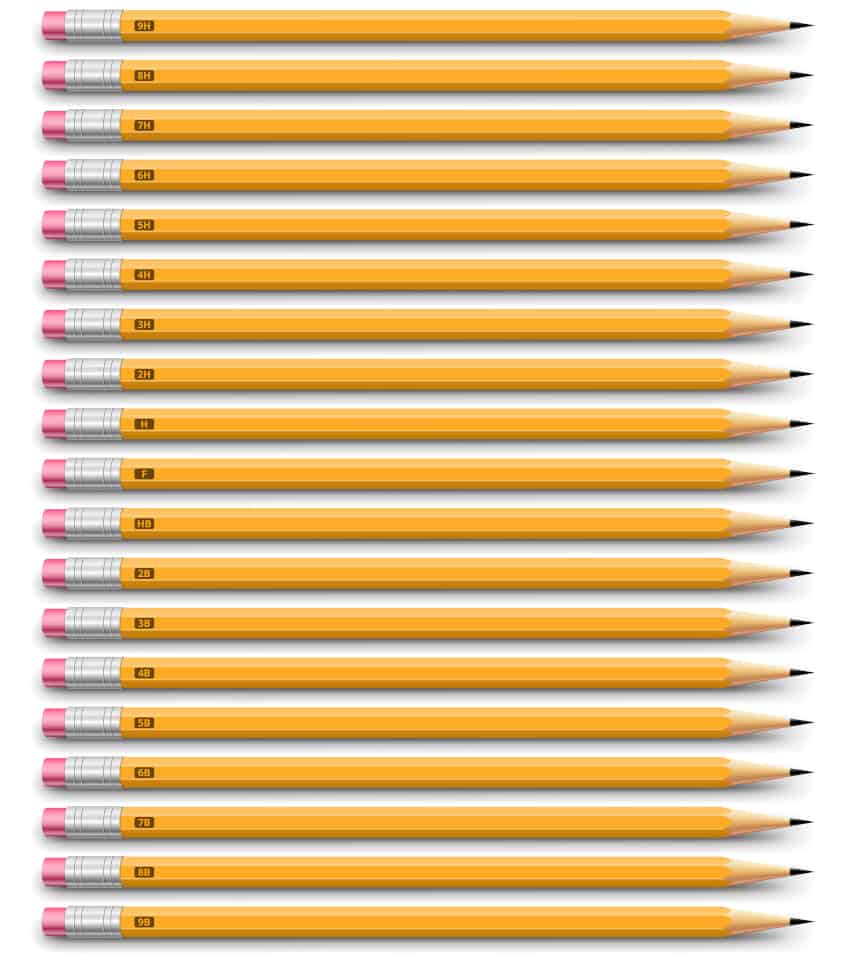
In the middle, you have the HB (Hard Black) and F (Firm) pencils, which have medium pencil hardness. Pencils designated with a B-grade are softer and contain a larger percentage of graphite, which also makes them darker, so you do not have to press hard. The H-grade pencils are harder and contain more clay and less graphite, which produces lighter marks or lines, so you have to press harder to get darker lines.
| Lead Hardness Scale | Hardness of Pencils | Pencil Uses |
| 9B | Extremely Soft | Artistic designs |
| 8B | Extremely Soft | Artistic designs |
| 7B | Extremely Soft | Artistic designs |
| 6B | Soft | Artistic sketches and drafts |
| 5b | Soft | Artistic sketches and drafts |
| 4B | Soft | Artistic sketches and drafts |
| 3B | Soft | Drawing |
| 2B | Soft | Drawing and writing |
| B | Soft | Drawing and writing |
| HB | Medium Hard | Drawing and writing |
| F | Medium Hard | Drawing and writing |
| H | Hard | Graphic and technical drawing, and writing |
| 2H | Hard | Graphic and technical drawing, and writing |
| 3H | Hard | Graphic and technical drawing, and writing |
| 4H | Hard | Graphic and technical drawing, and writing |
| 5H | Hard | Graphic and technical drawing, and writing |
| 6H | Extremely Hard | Technical drawing: cartography, and lithography |
| 7H | Extremely Hard | Technical drawing: cartography, and lithography |
| 8H | Extremely Hard | Technical drawing: cartography, and lithography |
| 9H | Extremely Hard | Technical drawing: cartography, and lithography |
You can also get pencils that go up to 12B, which is a very dark pencil and could be considered darker than charcoal pencils. Charcoal is generally much flakier and darker than graphite, and can be easily smudged, unlike graphite.
Differences Between Soft, Medium, and Hard Pencils
The major difference between all three soft, medium, and hard pencils is the amount of graphite and clay present. The harder the pencil, the more clay is present in the pencil, which produces a lighter and thinner mark. Medium pencils have more of a balanced composition and are the type of pencil most moms would pick for their children to use at school.
Soft pencils contain more graphite than clay, which produces a darker and smoother writing experience, and softer handling.
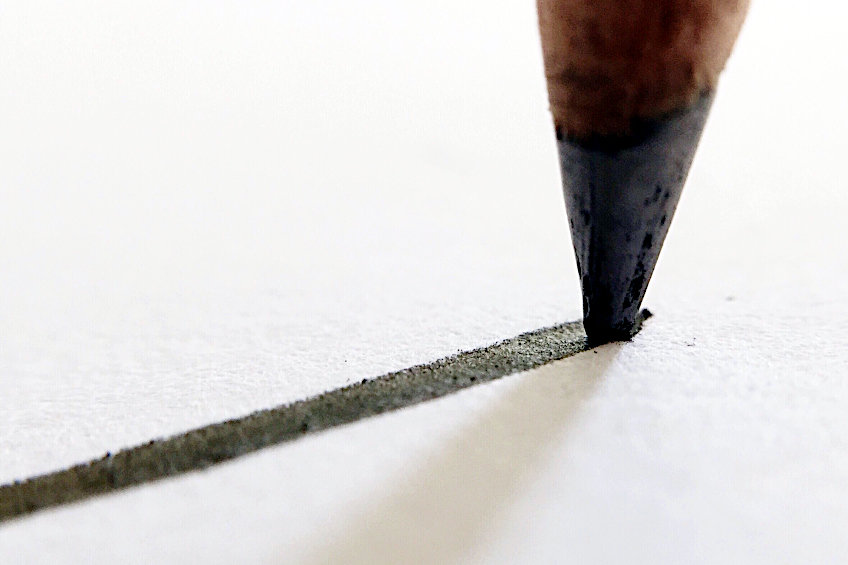
The Science Behind Pencil Hardness
You most probably have a general idea by now of the different pencil lead types available and what pencils are made from. However, we can look closer at the composition of a graphite pencil to gain a bit more understanding.
Graphite and Clay Composition
Graphite and clay play a big role in determining pencil hardness. As we have learned, it is the composition and ratio of graphite versus clay that make up the different types of pencils. Pencil makers use different ratios of graphite and clay to produce hard and soft pencil leads.
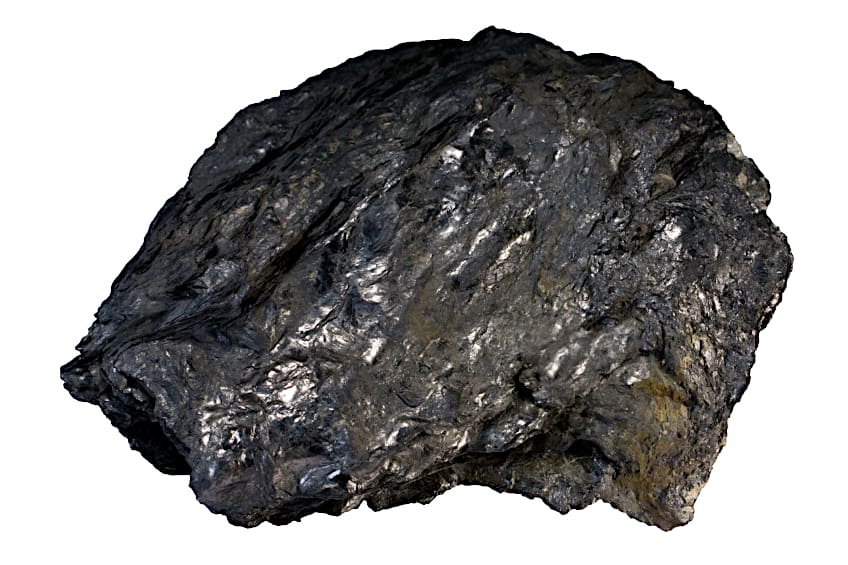
The hard pencils have more clay, which then has about 20 percent graphite, while softer pencils contain around 90 percent graphite and less clay.
The composition of a pencil lead usually includes graphite, clay, and a binder, such as resins, wax, or a polymer.
The lead is then also then surrounded by a wood casing. Pencil casings come in various designs based on where and how the pencil will be used.
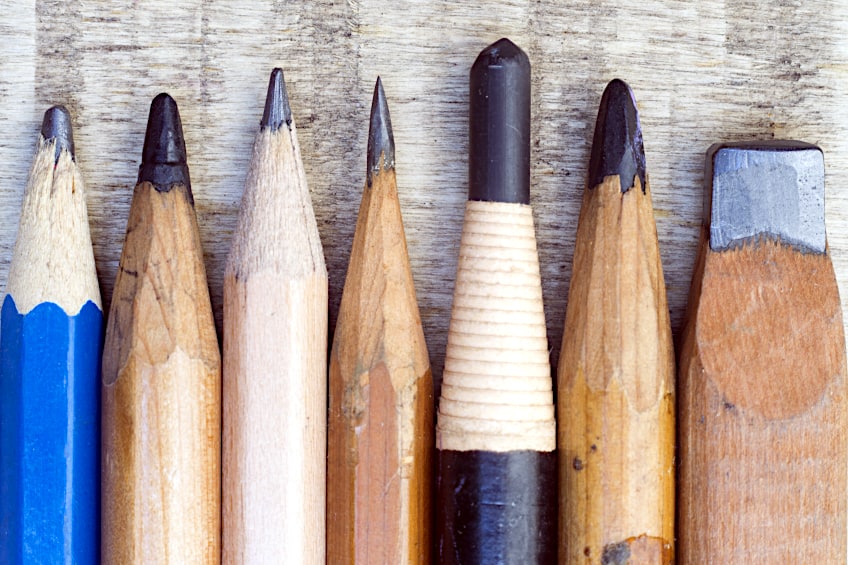
When the pencil lead is being processed, the graphite is first ground to a powder and then mixed with water. This paste is then fired in a kiln to produce the lead we use to write with. The duration as well as the heat also plays a part in the hardness of a pencil.
The Advantages and Disadvantages of Different Pencil Hardness
Not all pencils can be used for every purpose. However, many professionals and artists use a range of pencils and do not stick to a single grade of pencil. So, what are some of the pros and cons of each pencil lead hardness choice?
Soft Pencils
Let us start with soft pencils, which we know have more graphite and less clay. When looking at the drawing pencil scale, soft pencils are categorized from B to 9B. Let us now have a look at a few pros and cons.
[su_shadow style=”simple”][su_panel]- Soft pencil marks are easier to erase
- When drawing, soft pencils leave heavier and darker markings
- Offers more possibilities to make lighter or darker marks, depending on the pressure applied
- Soft lead pencils tend to be used more quickly and have to be sharpened more often
- The pencil marks can smudge easily, which is especially annoying for those who are left-handed
- The soft pencil lead breaks easily when you sharpen and draw with it
- The soft pencil fills the tooth of the paperless, which allows the texture of the paper to be more visible
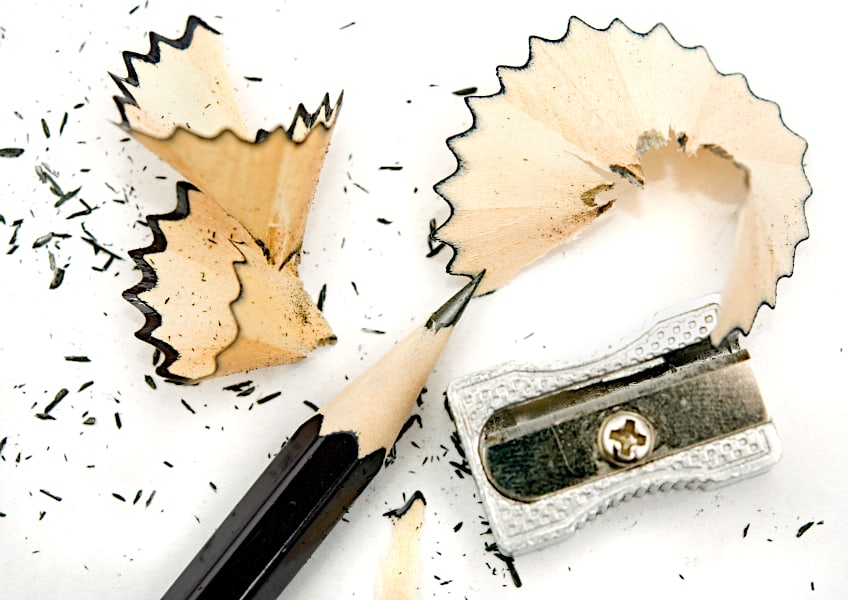
Medium Pencils
This is the most common type of pencil that most of us use every day, and these pencils are perfect to take to school. As with both soft and hard pencils, medium-grade pencils also have a few advantages and disadvantages.
[su_shadow style=”simple”][su_panel]- Easy to use and can be sharpened and erased well
- This is the ideal pencil type for beginner artists
- Provide a variety of shades from light to dark, depending on the pressure applied
- The various manufacturers or brands have different standards
- Mostly suitable only for general drawing
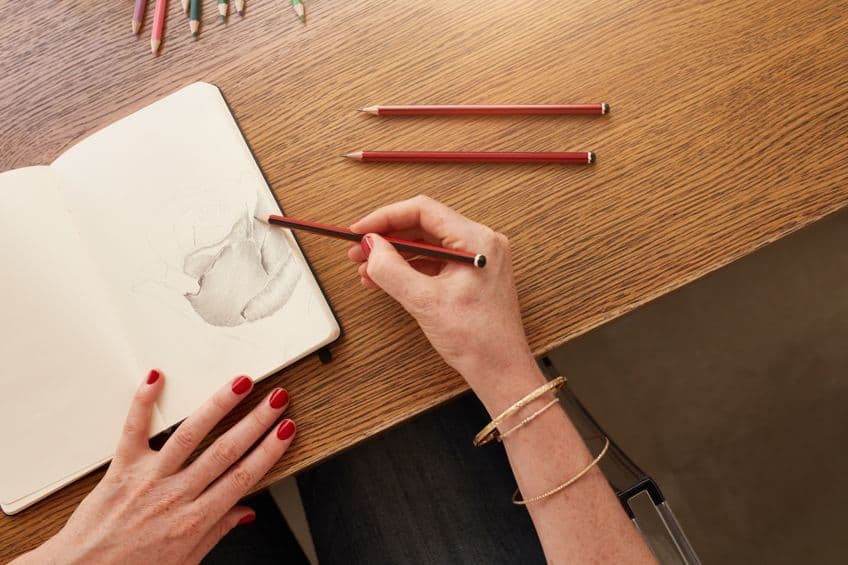
Hard Pencils
Hard pencils as we know have more clay and less graphite, and therefore, provide different effects than other grades of pencils. Let us see what advantages and disadvantages these pencils have to offer.
[su_shadow style=”simple”][su_panel]- Hard pencils last longer and remain sharp for longer
- When sharp, these pencils provide thin and gray lines for detailed drawings
- These pencils are also ideal for fine details in graphic or technical drawings
- Fill the tooth of the paper more effectively for a smooth transition of tone and value
- The markings are a light gray, becoming only slightly darker if more pressure is applied
- Limited in the range and depth of tone it can provide
- If you apply too much pressure, this could damage the paper surface

Choosing the Right Pencil Hardness for Your Needs
Maybe you would like to start drawing and you are unsure of what type of pencil hardness you need. You can take into consideration a few factors that should be able to help you out when making a decision.
Factors To Consider When Choosing Pencil Hardness
To begin with, you need to consider what you want to do with the pencil. Are you going to be writing or drawing, and what type of drawing are you going to do?
If it is not for any technical drawing or professional purposes, you can begin with a range of about five pencils. You do not have to go out and purchase an entire set of all the different pencil lead types.
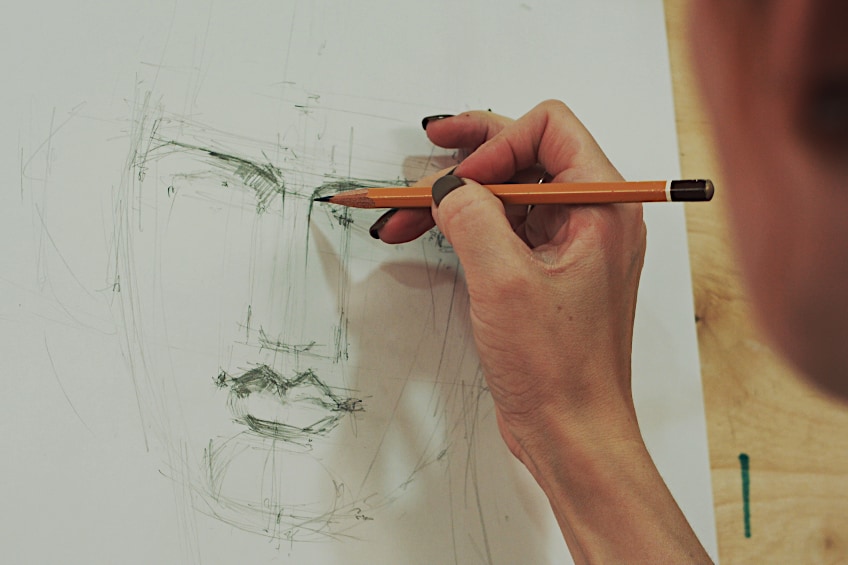
You should also take into account the quality of the pencil and the type of wood it is made from. Have you ever been annoyed by a pencil lead that keeps breaking or does not sharpen properly? Those were most probably lower quality and cheaper pencils. Below are a few more factors to consider when choosing pencil hardness.
- The proper hardness of a pencil can depend on the artist, do they have a heavy hand or a lighter touch? For example, those with heavier hands might choose pencils with softer leads.
- The type of paper you use is also important. Rough paper can require pencils with a harder type of lead, while smooth paper works best with softer lead pencils.
- The method you use to plan your drawings. Lighter pencils are perfect for initial sketches that can easily be erased.
- Do you want to add a lot of contrast and shadows? Darker pencils can accomplish a variety of dark values.

Tips for Artists and Writers on Choosing the Right Pencil Hardness
After reading all the above, you should have some grasp of the hardness of pencils. To end our article, we have provided a few tips to help you along your journey of choosing the best pencil for your writing or artwork.
- Always choose good quality pencils that are made from pure graphite and provide a smooth writing experience.
- High-quality pencil leads also erase quite easily and have centered graphite within the wood casing.
- Begin with five different-grade pencils, you do not need to start with an entire set.
- The only way to discover what pencils work best is to experiment.
- The HB pencil is great for simple sketching and writing.
- B-grade pencils are best for darker marks, while H-grade pencils offer finer and lighter marks.
- For a layered drawing approach or refined drawings, you can use a range of selected hard and soft pencils.
- Many pencil sets with a variety of pencil grades also include other tools, such as erasers, sharpeners, and blending stumps.
Finding the best pencil lead hardness mostly depends on the artist and can be a matter of preference. Since it is easy to find and purchase a range of pencil types, do not be afraid to experiment to discover what you like and what works best!
Frequently Asked Questions
What Pencil Is Best for Sketching?
When it comes to beginner’s and simple sketching, the HB pencil is an ideal choice. However, you can add a bit more diversity with a few different H and B pencils, or lighter and darker options as well.
What Is a Pencil Hardness Test?
Have you ever heard of a pencil hardness test? Known as the Wolff-Wilborn test, this is not to test the actual pencil, but it is a test where the various pencil hardness values are used to determine the hardness of a specific type of coating material. The pencil is pushed along the coating at a constant force and angle to determine the coating’s hardness.
What Pencil Grades Are the Best To Start With?
For a lot of artists, it is a matter of preference, but it also depends on the task. However, some artists fall more on the softer or B side, and include only a few hard pencils as well. For example, the following is a popular set of pencils for artists and includes HB, 2B,4B, as well as 6B, H, and 2H pencils. It is best to have a range of pencils available.
Matthew Matthysen is an educated multidisciplinary artist and illustrator. He successfully completed his art degree at the University of Witwatersrand in South Africa, majoring in art history and contemporary drawing. The focus of his thesis was to explore the philosophical implications of the macro and micro-universe on the human experience. Matthew uses diverse media, such as written and hands-on components, to explore various approaches that are on the border between philosophy and science.
Matthew organized various exhibitions before and during his years as a student and is still passionate about doing so today. He currently works as a freelance artist and writer in various fields. He also has a permanent position at a renowned online gallery (ArtGazette) where he produces various works on commission. As a freelance artist, he creates several series and successfully sells them to galleries and collectors. He loves to use his work and skills in various fields of interest.
Matthew has been creating drawing and painting tutorials since the relaunch in 2020. Through his involvement with artincontext.org, he has been able to deepen his knowledge of various painting mediums. For example, watercolor techniques, calligraphy and lately digital drawing, which is becoming more and more popular.
Learn more about Matthew Matthysen and the Art in Context Team.


